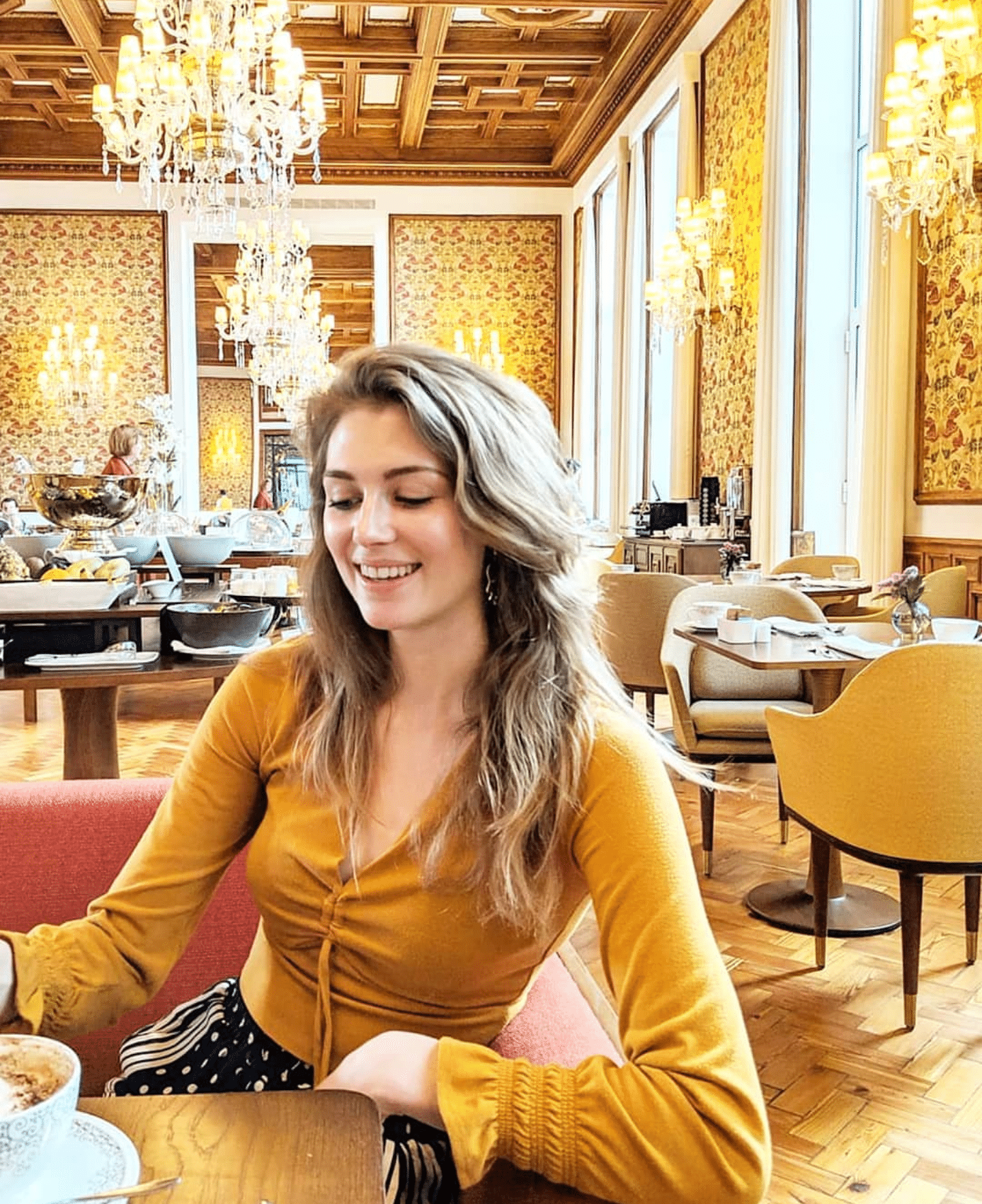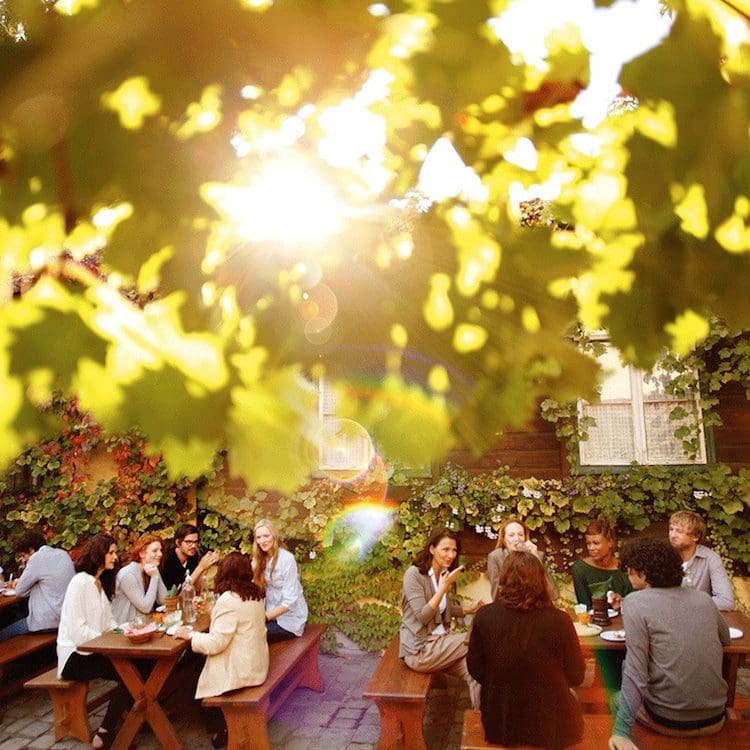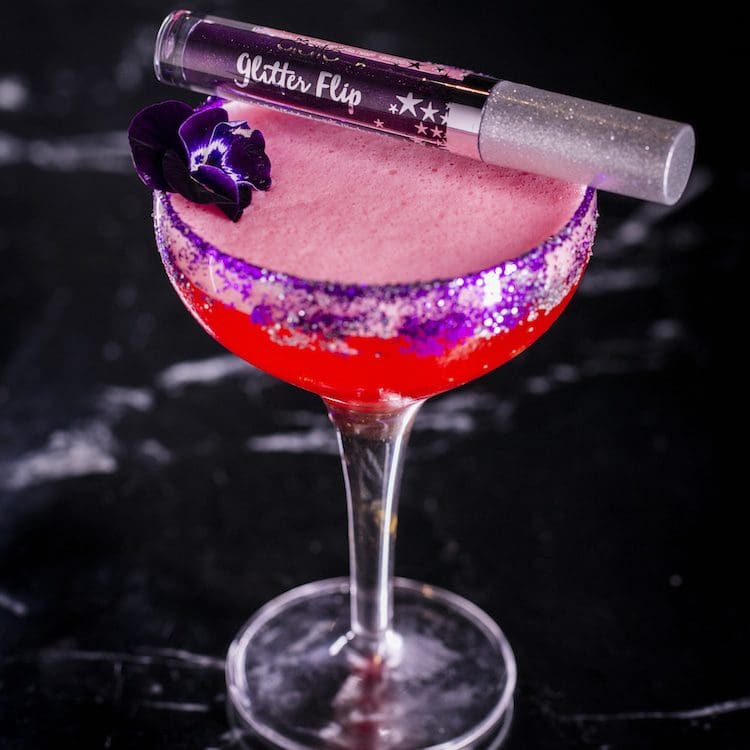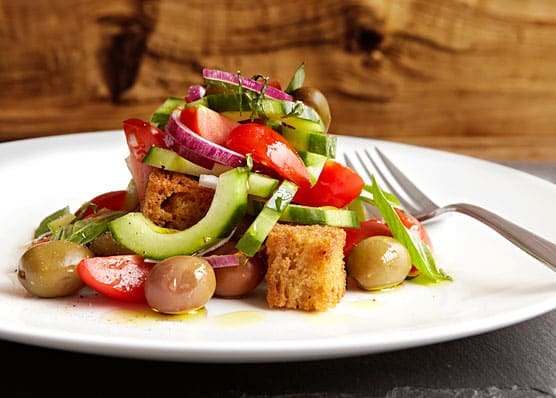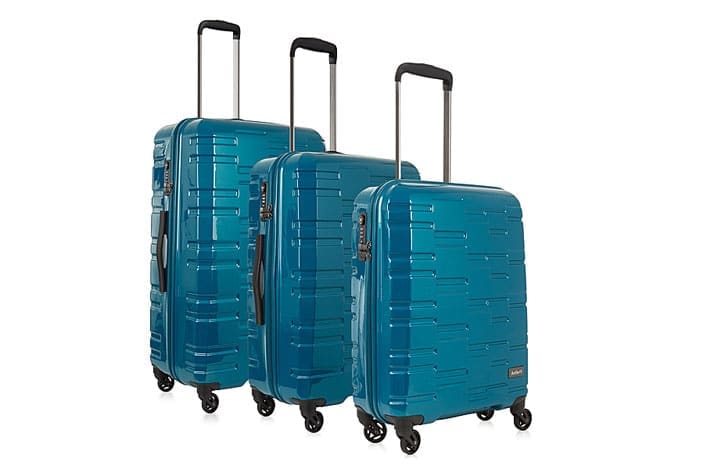‘In Porto we have slow time or stop time’ smiles the local driver behind suave sunglasses.
Portugal’s second city is having a bit of a moment, and I’m here to find out why it’s gotten so popular, so quickly. But the pace of life here is anything but: I’m gently lulled into Porto’s unhurried rhythm. Few cities can be so calming.
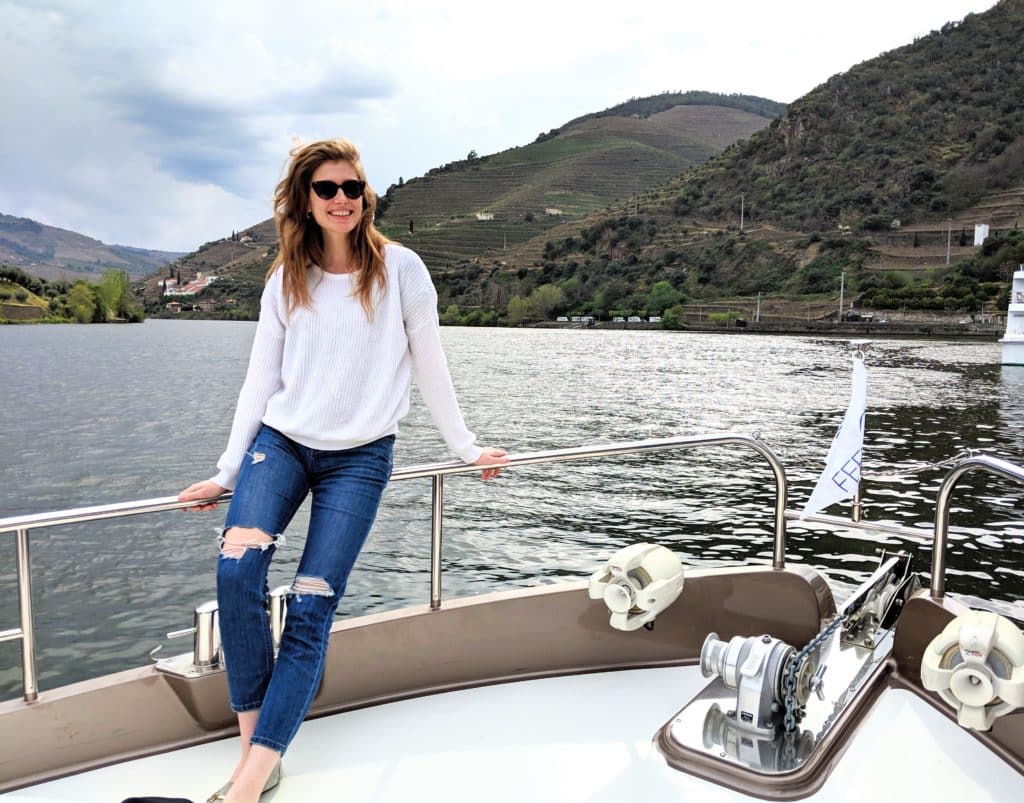
Me on the Feel Duoro cruise 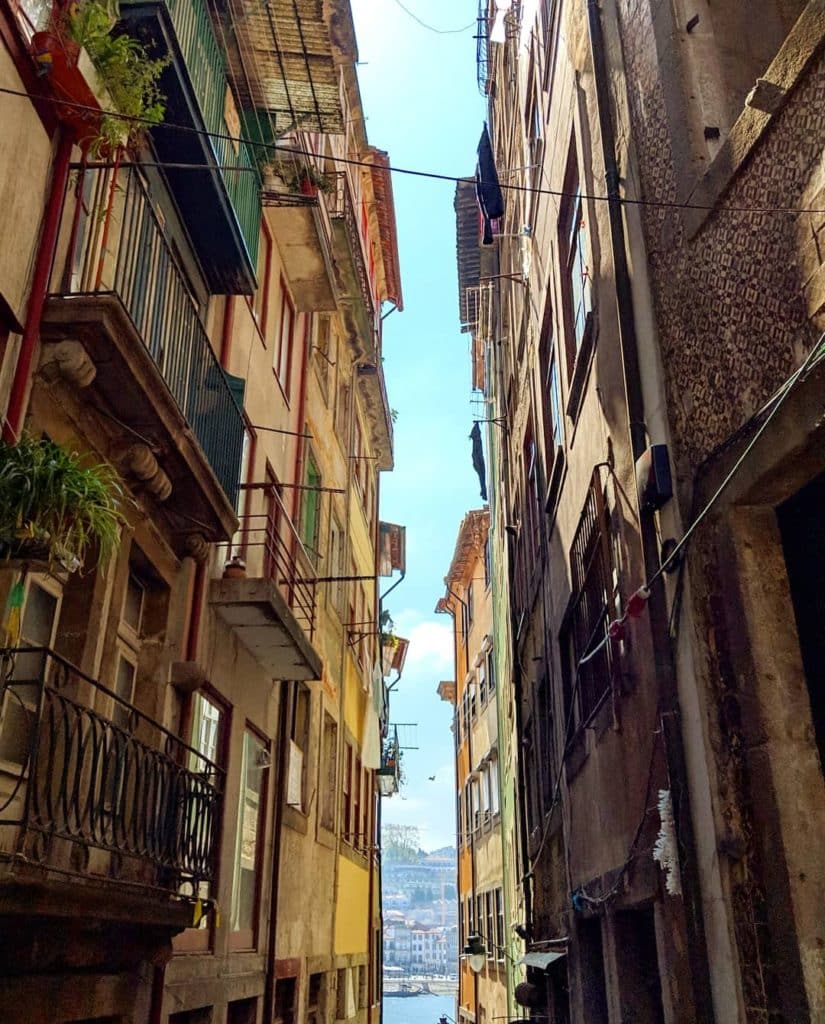
The streets of Porto 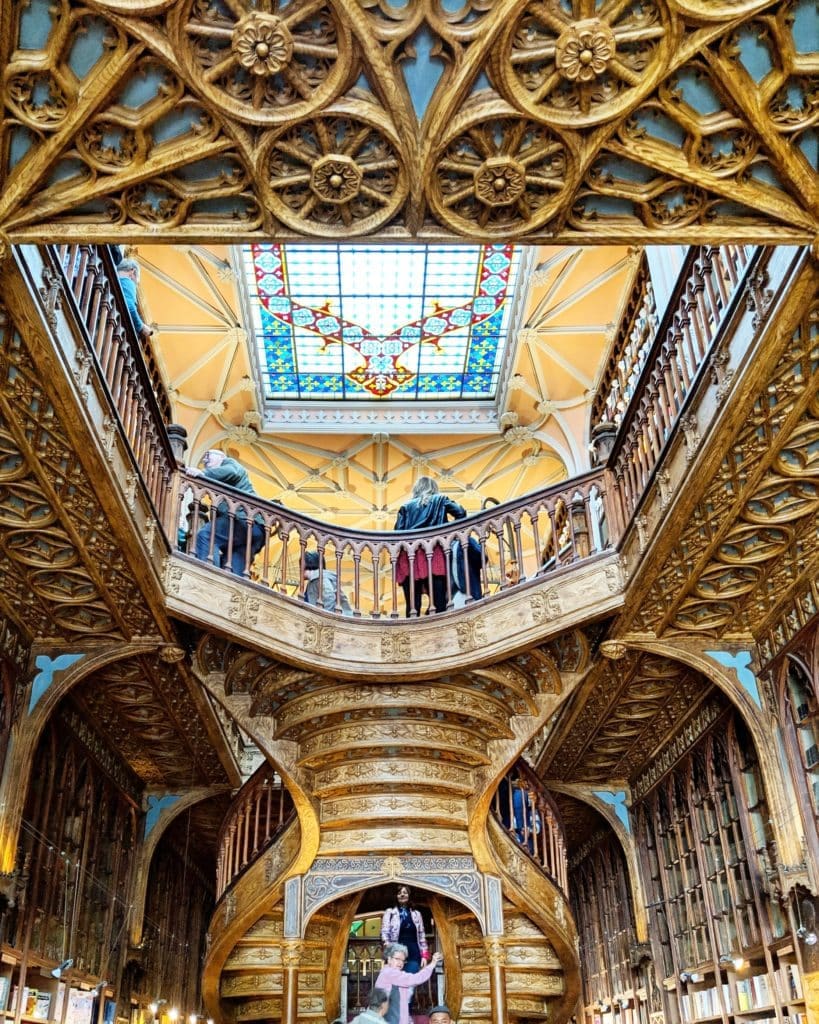
Livraria Lello 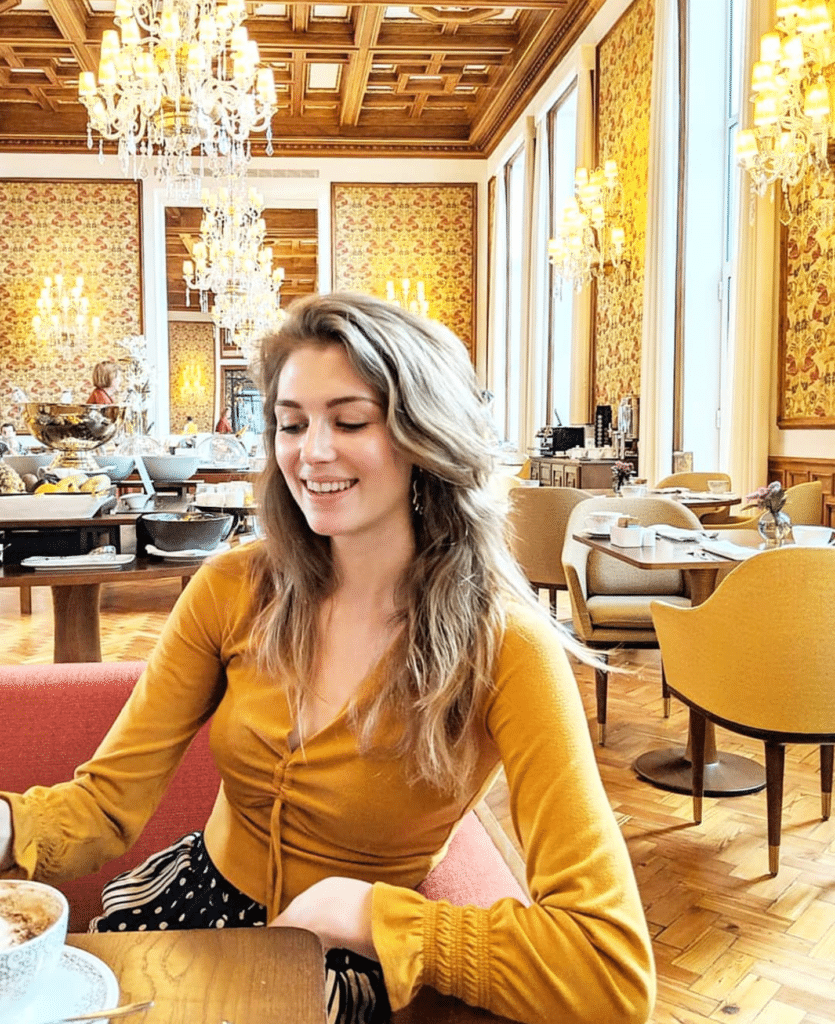
Dining at Infante Sagres
by Emily Williams
We meander inland towards the Douro Valley and soon I’m stepping out onto the riverfront decking at the sophisticated DOC restaurant. The landscape doubles delicately on the water’s glassy mirror, unruffled by any movement other than the occasional swoop of a kingfisher or the ripple of a fisherman’s rod.
Lunch is as exquisite as the view: a Ferris wheel of five taster courses, from creamy seafood rice to a popping candy petit four, complemented by palate pleasing wines from nearby vineyards. The DOC’s superb al fresco service introduces me to the heart-warming Portuguese hospitality for which Porto is famed.
As if by clockwork, a Feel Douro cruise boat arrives just as we savour our final mouthfuls, and we join the famous waterway that runs all the way to the Spanish border. As we drift along the water, the verdant patchwork of terraced vineyards known as quintas pass by No wonder it’s claimed to be one of the most beautiful rivers in Europe.
‘Porto and its Douro have a rustic charm and a charismatic soul’ beams the enthusiastic boat host as she hands out syrupy sweet glasses of muscatel to all on-board. Although a Lisbon-born native, she was drawn to Porto’s distinctive identity.
The sparkling waters lead the boat towards Piñhao, where The Vintage House (one of the few exclusive hotels in the Douro owned by The Fladgate Partnership) rests on the tranquil water’s edge. At the riverfront entrance, a whimsical pergola leads into me into a colonial style bar called The Library, where deep-buttoned leather sofas and classical cabinets sit beneath the majestic beamed ceilings. Along the corridor, I also spy beautiful hand-painted murals of grape harvest scenes in the ambient Rabelo Restaurant. Elegantly appointed suites overlook the spectacular bend of the river. The water’s omnipresence has a soothing effect; it’s the kind of place I’d imagine authors to be writing their next novel.
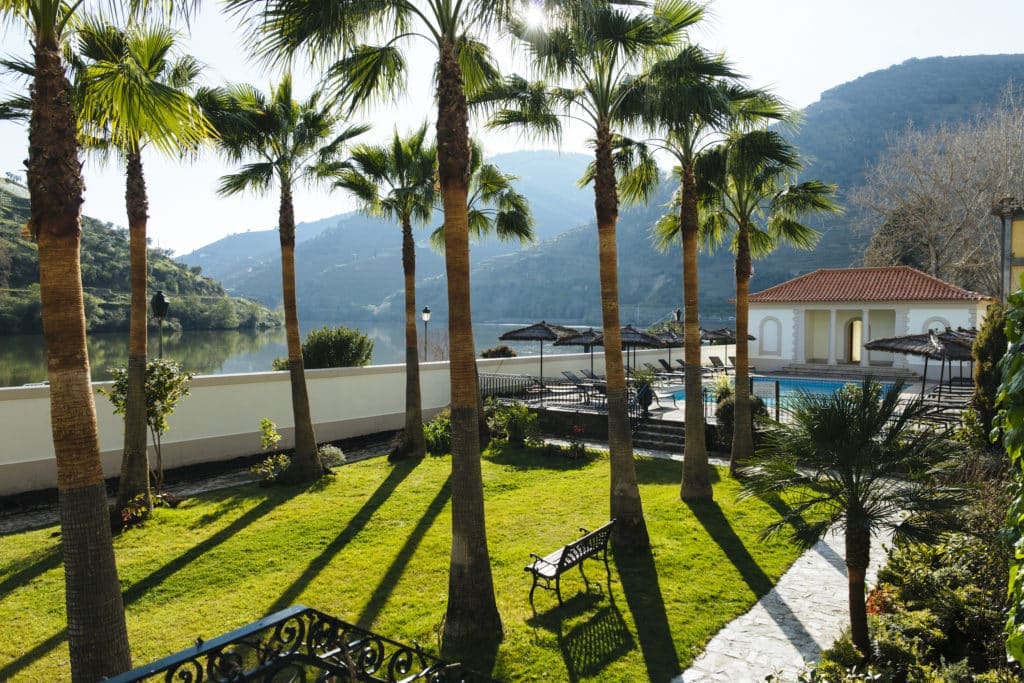
The Vintage House 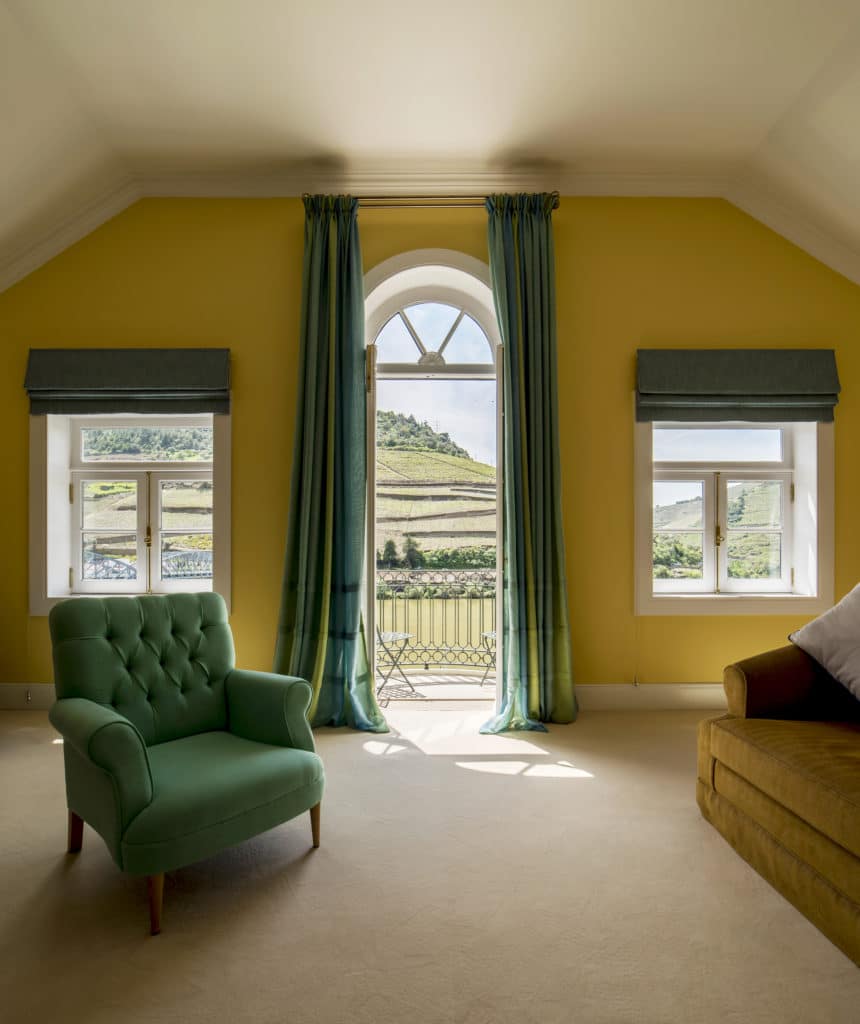
Inside the Vintage House
Nearby the property, visitors can taste the fruits of The Fladgate Partnership’s Quinta Da Roêda, the vineyard that produces Croft Port. It’s a thought-provoking excursion that reveals what makes the Douro Valley the first demarcated wine region in the world. I study the vines more closely: their dried twisted roots are well adapted to the aggressive terroir, which fluctuates between soaring 50-degree summers to bitterly cold winters. Along with the climate, the undulating landscape makes each vineyard as unique as a thumbprint. I follow our guide to the traditional grape-treading basins, where the dehydrated fruits are still picked and crushed manually today. Croft Port winemaking is still very much a communal labour of love. There really is no better place to savour their Old Tawnies or the first ever rosé Port wine than here in its birthplace, surrounded by stunning scenery on the wisteria-laden terrace.
The next morning, after a few too many Pastéis De Nata (an indulgent mini custard-filled pastry that’s now trending across Europe), I board the train at Piñhao station just steps away from The Vintage House. The picturesque railway traces the valley’s watercourse, and as I watch the morning sunlight glitter on its surface, the colour illuminates to reveal the Douro’s true translation, the River of Gold. Two and a half hours fly by on this scenic ride that feels as though you are immersed in an Old Master’s painting; any time spent travelling through this spellbinding World Heritage Site is worth it just for the view.
My next stop is Porto city centre, and its inescapable charisma wins me over in a heartbeat. I wander through the winding streets lined with kerbside cafes, artisan shops and baroque terrace houses faced with azulejos tiles. The atmosphere is laidback and unassuming, punctuated by plenty of historical attractions. These include the stunning São Bento Central Station, where tourists stop and gawp at the beautiful frescoed atrium, and the Livraria Lello, an ornate 130-year-old neogothic bookshop renowned for inspiring the Harry Potter series when J K Rowling lived here in the 90s.
Towards the medieval Riberia, any afternoon in Porto is well spent at the Taberna Dos Mercadores. With only a few exclusive tables inside, dining in this intimate restaurant feels like sitting in the hull of a ship, and fittingly its seafood is exceptional. My salt baked cod is set alight as its served to reveal the delicately cooked fish beneath, the display adding a dash of drama to an otherwise relaxing meal.
The first five star hotel in the city, Infante Sagres, is part of the Fladgate Partnership and a member of Small Luxury Hotels of The World. Over the decades, many influential figures and celebrities have graced its halls. The foyer sets the scene, with its opulent iron balustrades, timeless oak panels and stunning stain glass window that casts a glow along the ruby helical staircase. Then adjoined to its central courtyard is the effortlessly chic Vogue Café, where fashionable food lovers flock for its trendy all day menu. Before dinner, the mixologist whips me up a citrus Mandarin Collar cocktail, sweetened with his own homemade quince jam.
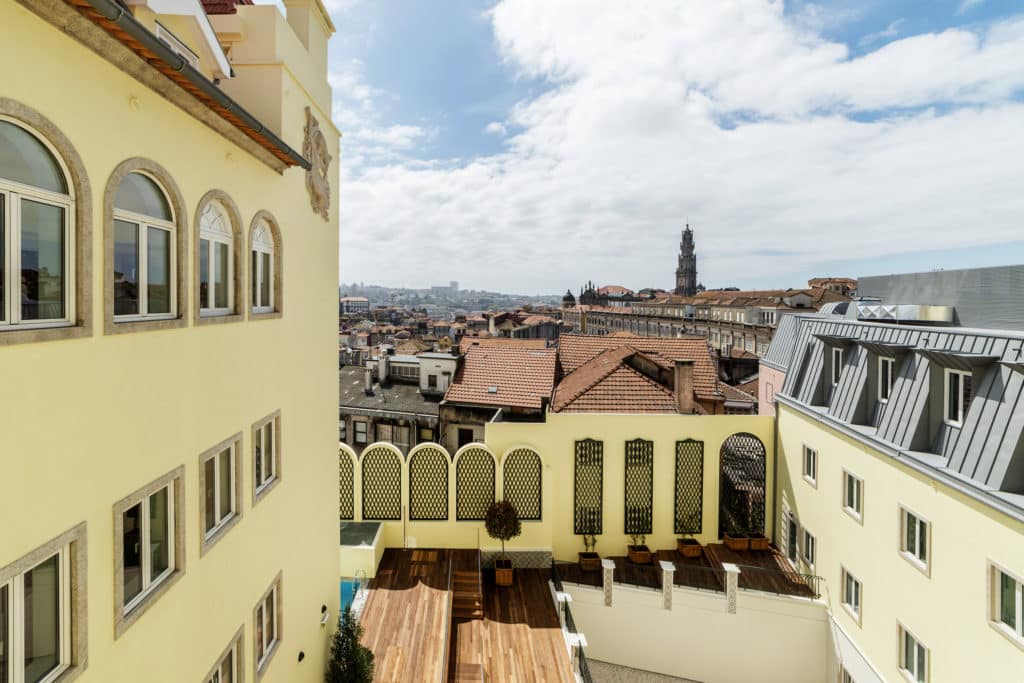
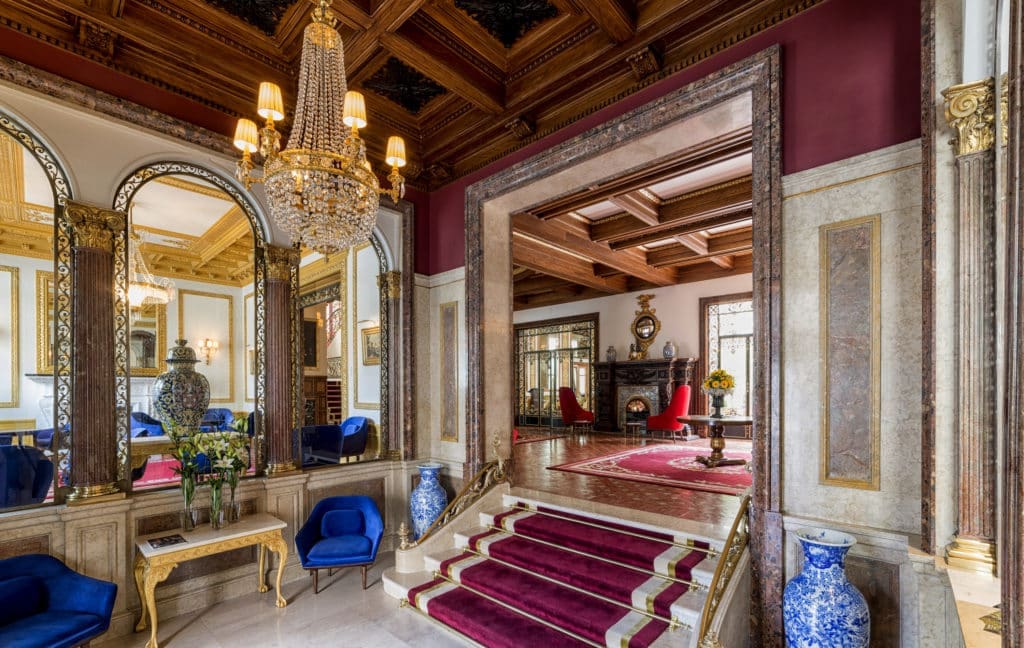
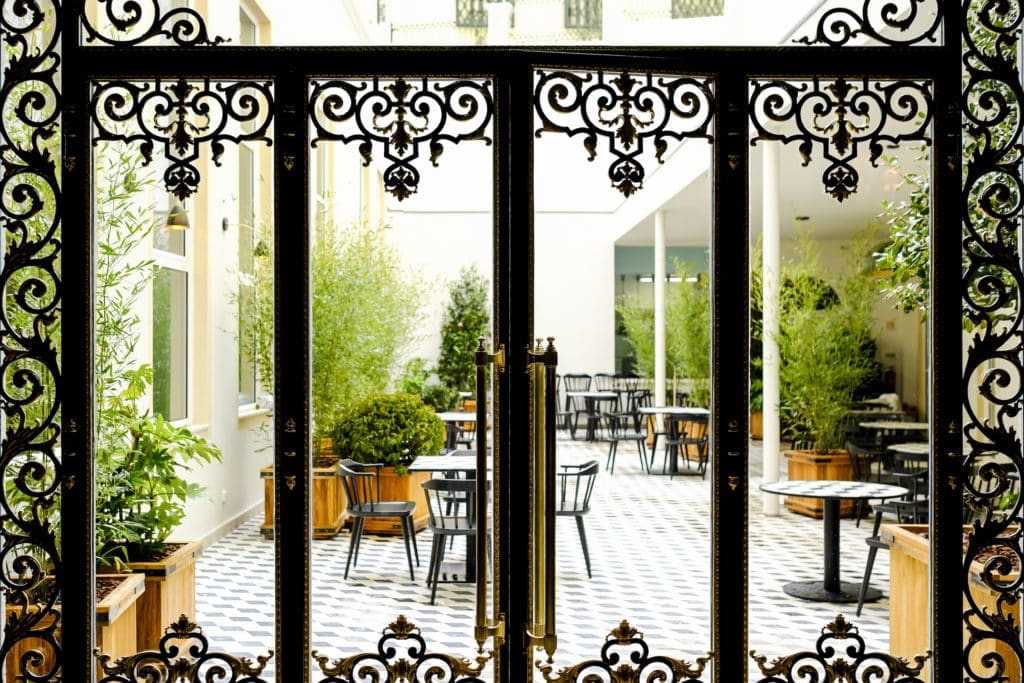
Infante Sagres 
Vogue Cafe at Infante Sagres
The Fladgate Partnership’s other enviable asset is The Yeatman, a grand hotel located across the iconic D. Luís Bridge in Vila Nova De Gaia. The palatial property stands proudly on the hillcrest amongst the famous port lodges. Fittingly, its design is also imbued with the spirit of wine. Not only do wine partners sponsor the expansive suites, but its Caudalie Vinothérapie spa treatments are also infused with grape extracts, and the outdoor pool is shaped like a giant decanter.
The Yeatman’s double Michelin star Gastronomic Restaurant is an elite dining experience. The head chef, Ricardo Costa, creates a story with his masterful food that fuses authentic Portuguese cuisine with daring twists and inventive presentations. When the nine indulgent courses come to an end, the polite waitress arrives with a dessert trolley of glistening chocolates: ‘any room for more?’ It’s impossible to say no when it all tastes this good.
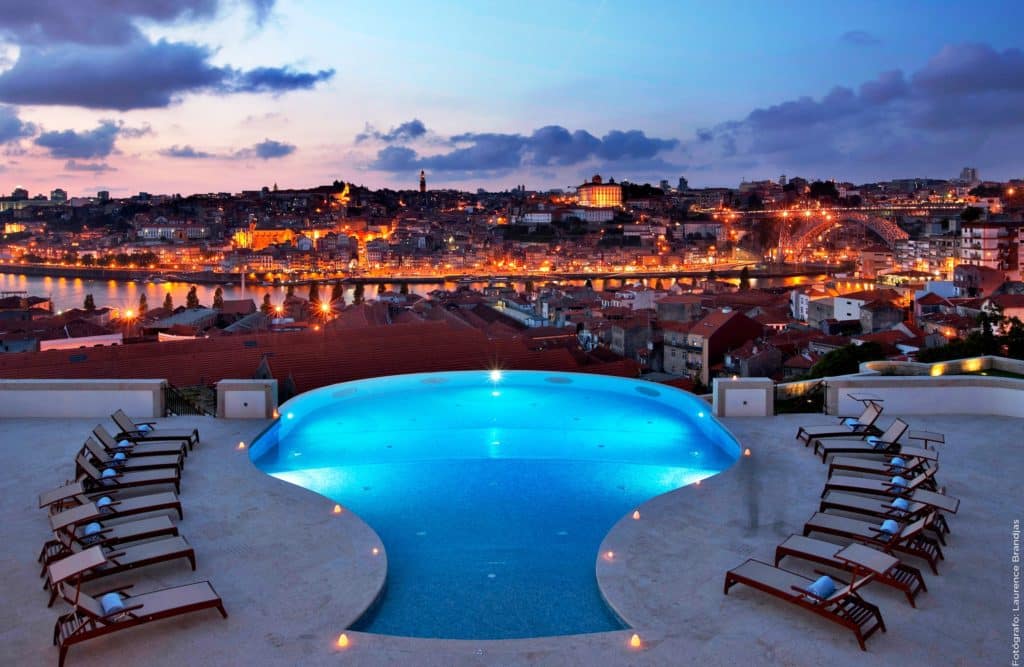
The Yeatman’s Pool 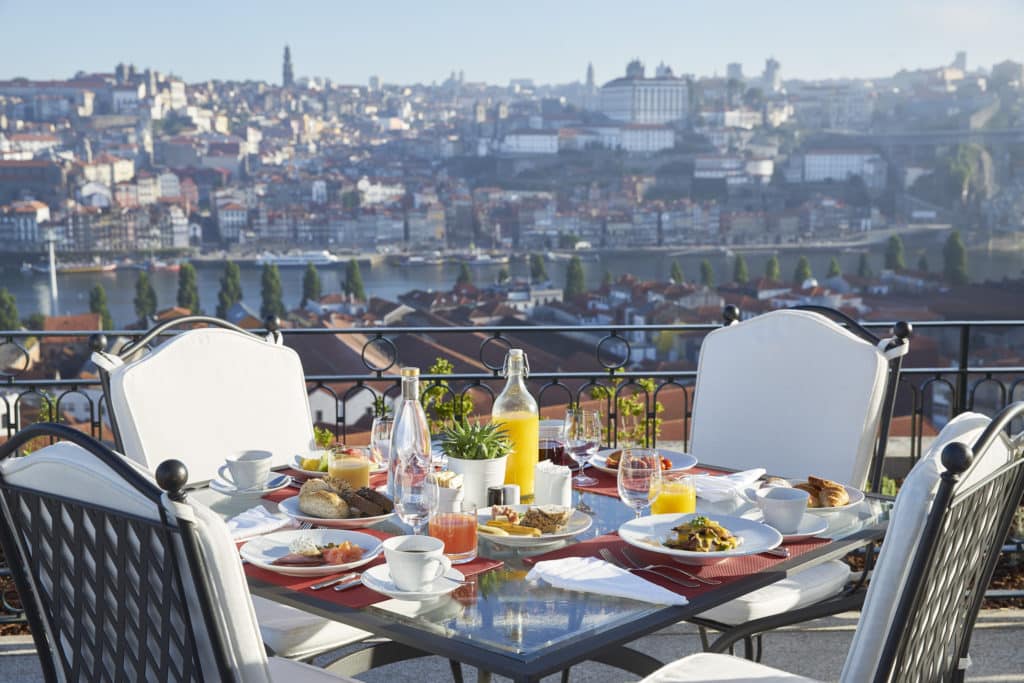
City views from The Yeatman
Rubbing shoulders with The Yeatman hotel is Taylor’s Port Lodge. The gravel crunches below as I explore the vast historic warehouse, filled floor to ceiling with ageing port casks. The wine conditions are highly controlled in old reused barrels so that the wood does not influence the already complex flavours of the wine. ‘The balance is crucial,’ says the passionate tour guide as she recites a historic letter once sent to the King of Portugal, port wine ‘should flash like gunpowder; its colour should be deep as ink; its sweetness should be like the sugar of Brazil, and its aromatic flavour as the spices of India’. Clearly, the process has long been considered a work of art, and its refined craftsmanship is what now distinguishes Porto as a wine capital of the world.
And Porto’s wine heritage is about to become even more pronounced. At the in-house restaurant, I meet Adrian Bridge, CEO of The Fladgate Partnership, who tells me about the forthcoming World of Wine. Set to open in 2020, the World Of Wine will encompass a wine school, art galleries and museums. Once opened, it will become Porto’s most comprehensive celebration of its wine heritage, with Fladgate investing €100m.
No doubt World of Wine will be a state-of-the-art experience. But Porto’s somnambulant charm will surely infuse it with that traditional laid-back vibe, like it always does.
Classic Collection Holidays (0800 047 1064; classic-collection.co.uk) offers holidays with private transfers and flights included to Porto & Douro. Prices start from £1098 for 7 nights at Vintage House Hotel, and from £743 and £575 for 3 nights at The Yeatman and Infante Sagres respectively. Prices are person based on bed and breakfast. Twin and multicentre holidays can be arranged.

